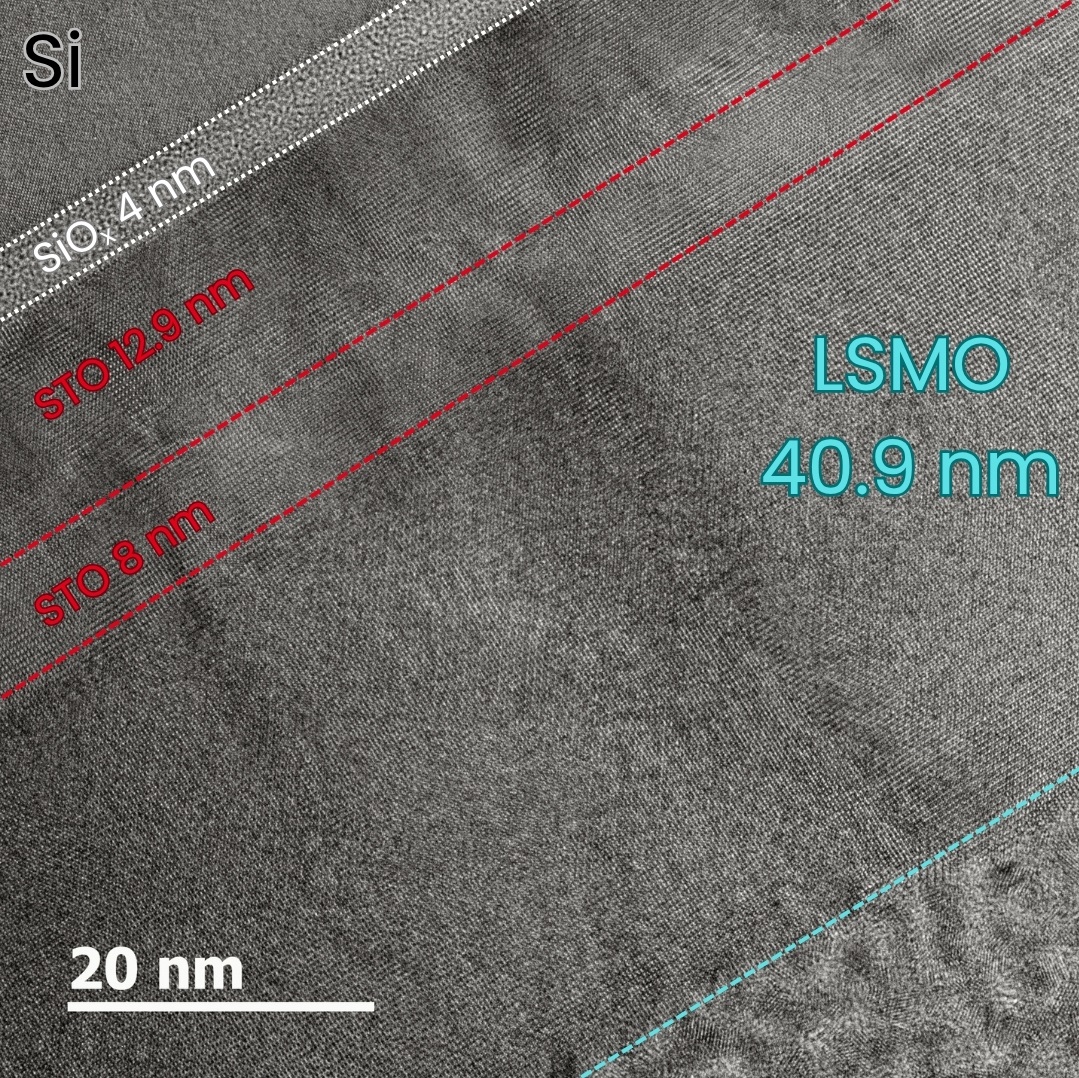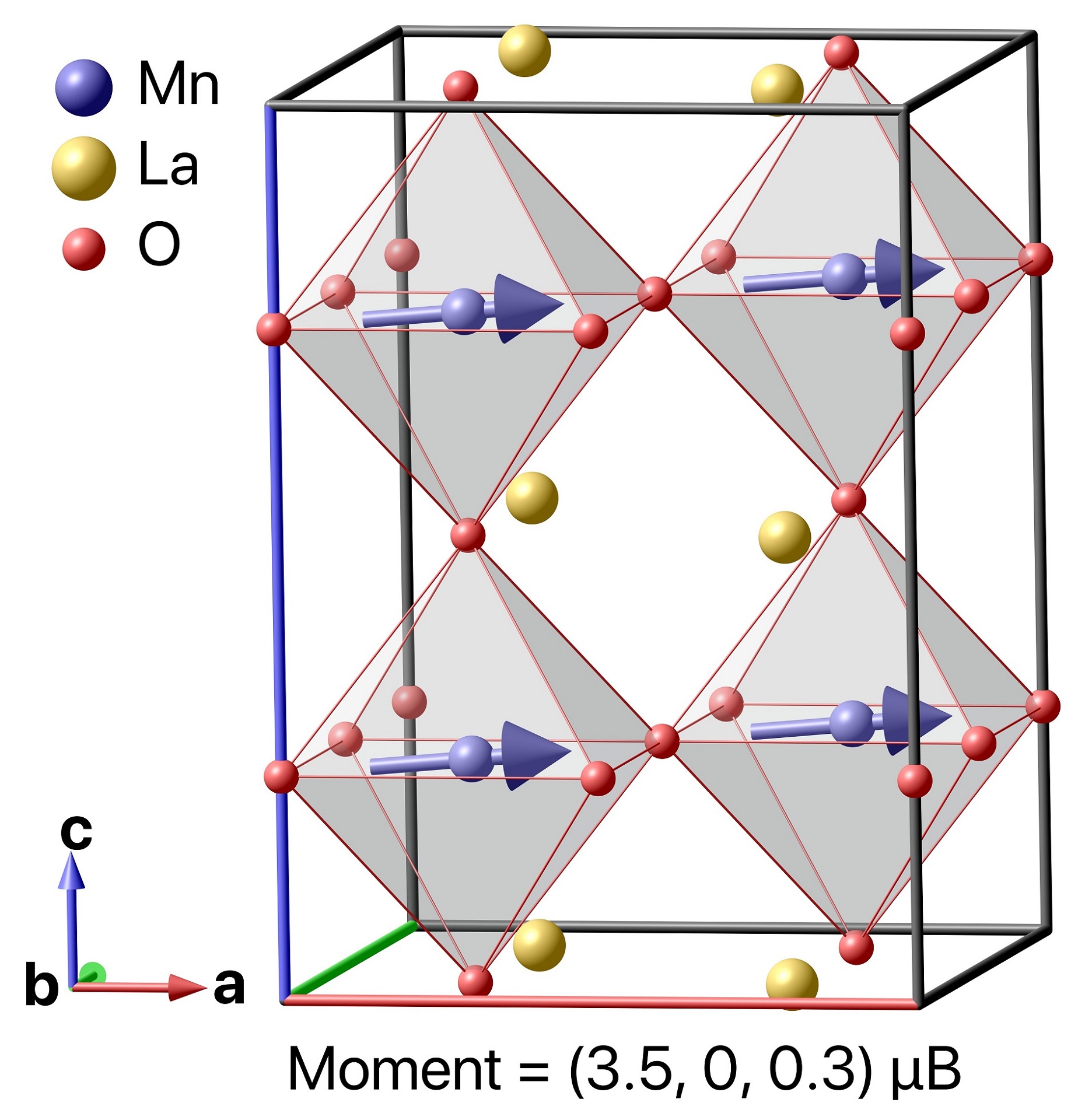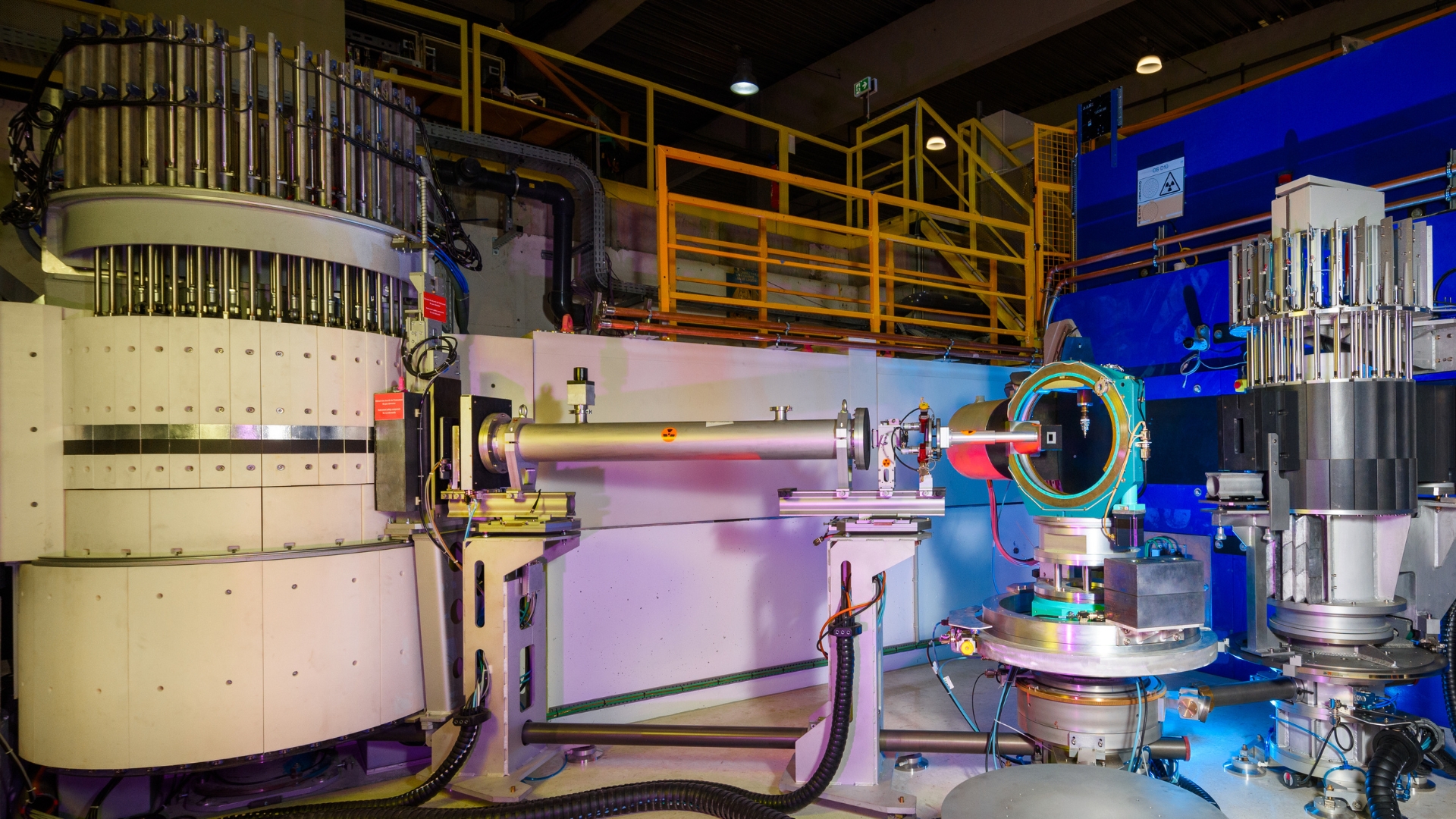Manganese oxides have promising magnetic and electronic properties for spintronics, or spin electronics: in addition to charge state, electron spins are used as a further degree of freedom, with implications in the efficiency of data storage and transfer. The magnetic properties of these thin-film materials depend on the constraints of the substrate on which the layers are deposited. It is therefore essential to characterize their magnetic order precisely, in order to exploit them for applications such as magnetic MRAM memories and sensors. However, determining this structure on a nanometric scale remains a major technical challenge.
To overcome these obstacles, our research team combined:
- Macroscopic measurements (SQUID*)
- diffraction on the
D10 neutron line* (recently optimized at the Laue Langevin Institute, in Grenoble.
Thanks to its 4-circle configuration and its analyzer option,
D10 line was able to isolate the magnetic signal from a thin LSMO film (40.9 nm thick, 5x5 mm square) deposited on silicon with a SrTiO3 (STO) buffer layer (see
image 1) despite the very small amount of material in the film and the background noise of the substrate.

Image 1: Cross-section by electron microscopy of a thin LSMO film (40.9 nm) deposited on silicon with a SrTiO3 (STO) buffer layer. © CEA
Below 260 K:
The film undergoes a paramagnetic to ferromagnetic phase transition. The magnetic moments align predominantly in the (ab) plane, with a small out-of-plane component (see
Figure 2). Neutron diffraction was used to determine precisely the values of the in-plane and out-of-plane components:
m = (3.5, 0, 0.3) μB.
The structure found is distinct from bulk LSMO (orientation [111]) and very thin films (mixed phases).
The results show that the thickness controls the magnetic order (from nm up to bulk material). This is crucial for materials engineering and provides direct evidence that substrate stresses dictate the magnetic anisotropy of thin films. This opens the way to improve spintronic devices through precise control of moment orientation.

Figure 2: Magnetic structure of LSMO determined in this study. Magnetic moments are carried by manganese (Mn) and represented by blue arrows.
This study successfully demonstrates that neutron diffraction can resolve the magnetic structures of thin films. By overcoming this technical challenge, it offers a unique tool for spintronics, where precise knowledge of magnetic anisotropy is an industrial lock. The optimization of the D10 instrument now opens the way to exploring new nanostructured quantum materials.
Collaborations
- Institut Laue-Langevin ILL, Grenoble
- Laboratoire national des champs magnétiques intenses LNCMI – CNRS, Grenoble
- Equipe Magnétisme et Diffusion Neutronique - CEA-Irig/MEM
- Matériaux, Rayonnements, Structure MRS - Institut Néel, Grenoble
- Laboratoire de cristallographie et sciences des matériaux CRISMAT – Université de Caen
- Laboratoire Théorie de la Matière Condensée - Institut Néel, Grenoble
SQUID* (Superconducting Quantum Interference Device). The SQUID magnetometer provides highly sensitive measurement of the magnetic moment of a sample as a function of magnetic field (static and/or alternating) and temperature.
D10 neutron Line* is unique in being the only four-circle diffractometer with optional energy analysis as on three-axis spectrometers. It also possesses a unique four circle dilution cryostat for temperatures down to 0.1K.
